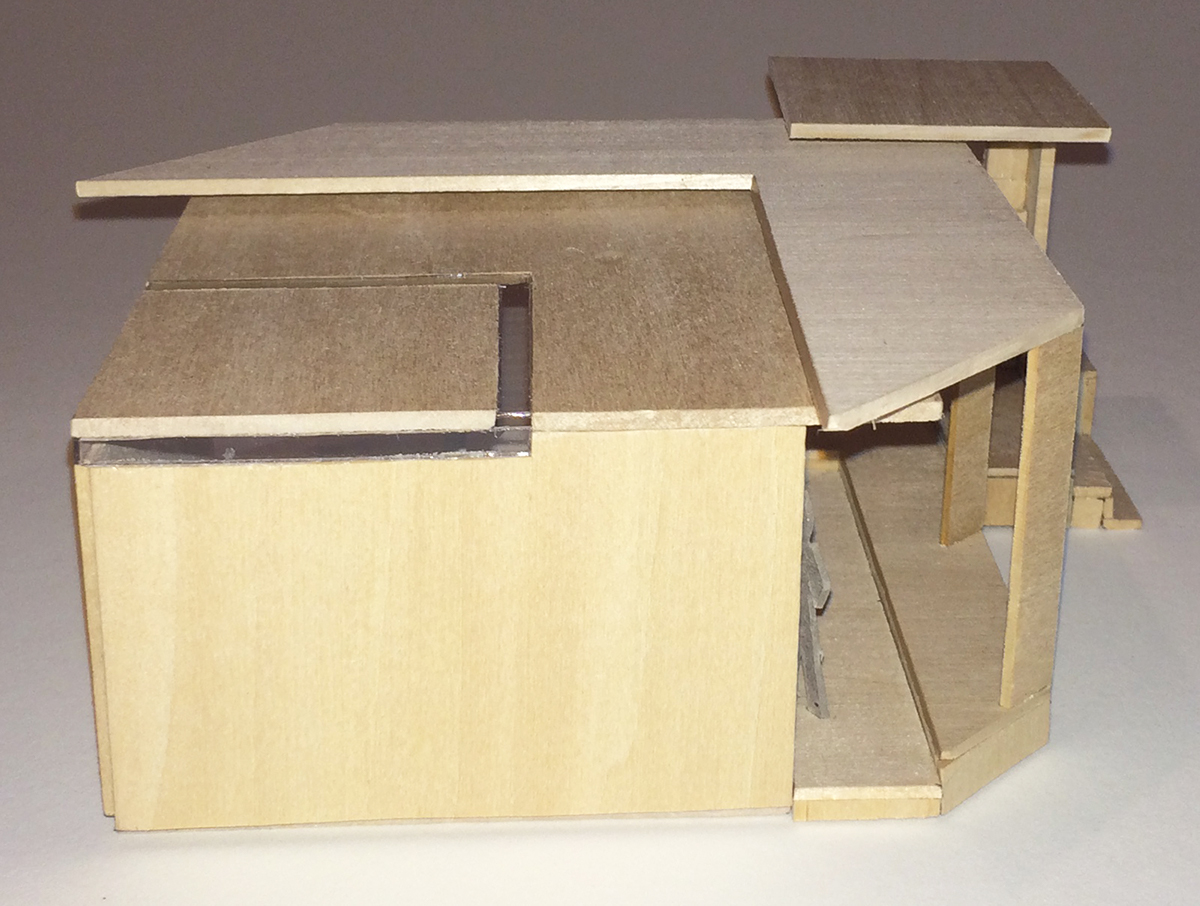Project Overview
This project is a 3D study of a poetic, metaphorical ceremonial space -- an Ethiopian coffee ceremony -- that uses nine boxes or volumes in its design. It is a modification or variation of a Bauhaus exercise involving the manipulation of nine squares to form a composition. The goal was to convey the sense of ceremony through the use of openings and depressions within the walls, ceilings, columns and the ground.
Background
Coffee is a very important source of sustenance in Ethiopia and is heavily ingrained in Ethiopian culture and society. It is custom to enjoy coffee with friends and family, never alone. An ethiopian coffee ceremony is a spiritual cleansing ritual and social gathering where 3 rounds of coffee are usually served which are known as the abol, tona and baraka. Each serving is progressively weaker than the first, transforming the spirit along the way. The last serving is a blessing. There is usually an abundance of praise for ceremony's performer -- usually a hostess -- and the coffee that she brews. It is a sign of friendship and respect to be invited to a coffee ceremony, therefore the guests play an important role in the ritual also.
Design Solution
My goal was to arrange the nine volumes in a way that articulates the hierarchy of the hostess' role, and the very important interlocked participatory role of her guests. The resulting design is a metaphorical composition of the abol, tona and baraka. The abol is the invitation threshold, which is represented by the highest of the nine elevated volumes along with a set of stairs on each of the two exterior-facing sides. This helps to slow down the progression of the guests upon their entrance and represents the slow, important ritual of the two-hour coffee ceremony where coffee is enjoyed, not rushed.
The tona, or second serving, is represented by 4 volumes arranged into a large square sitting at the base, or lowest elevation of the pavilion. It represents the hostess' space for her important role of preparing and serving coffee through a hierarchal arrangement, where her space is the largest and the main focal point within the pavilion.
Finally, the baraka represents the third serving, and the social gathing with the hostess' guests. It is represented by four volumes that sit in between the abol and tona levels to convey the sense of interlocked participatory role the guests play from the moment they enter through the abol and interact with the hostess during the tona.
Overall, the abol, tona and baraka are connected volumes that gradually interlock, overlay and gradually depress inside the pavilion toward the hostess so that all of the guests can easily see and interact with her and other guests.

The design solution is based on a hiearachal, interlocking arrangement

The Section diagram is South-facing
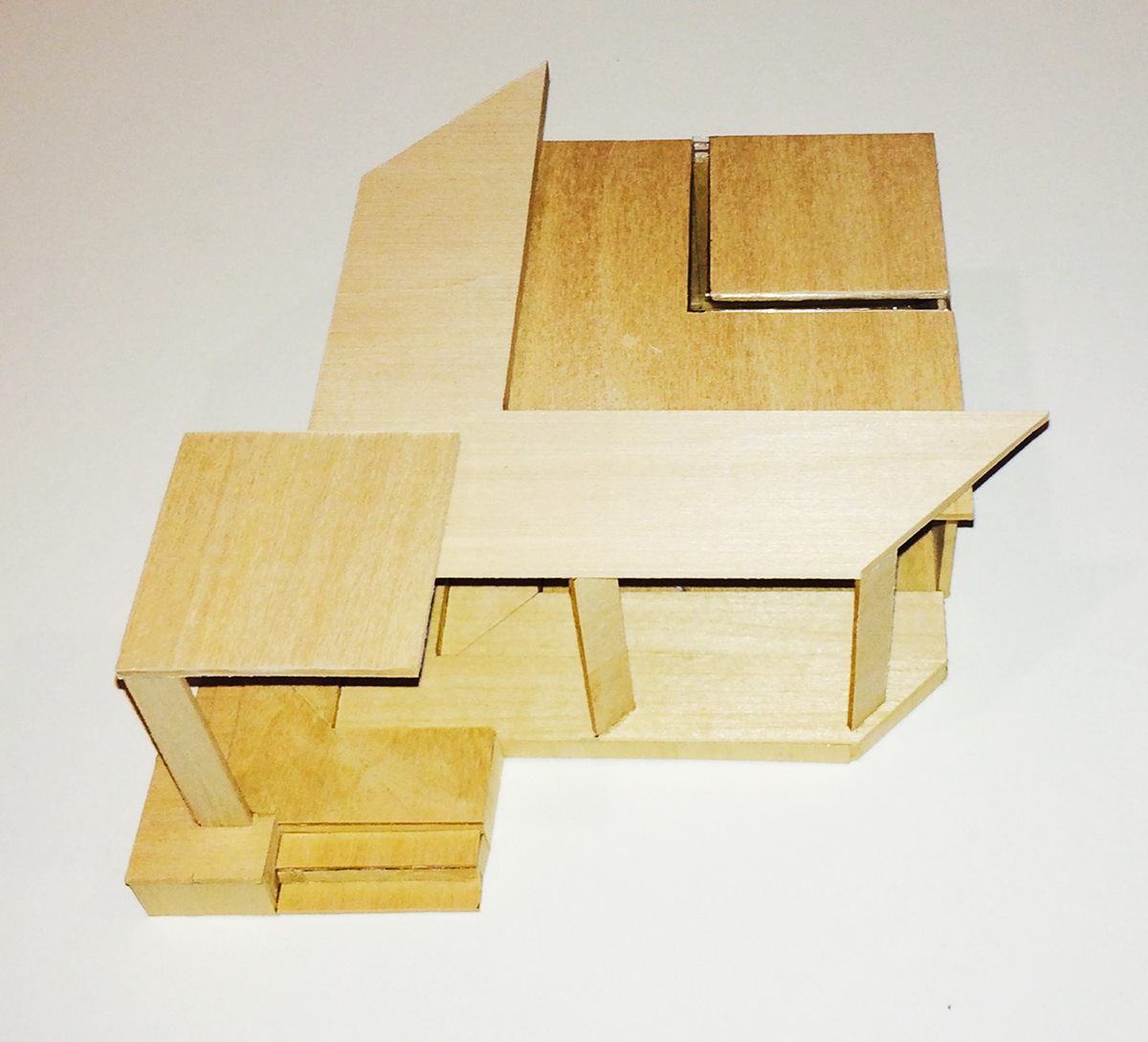
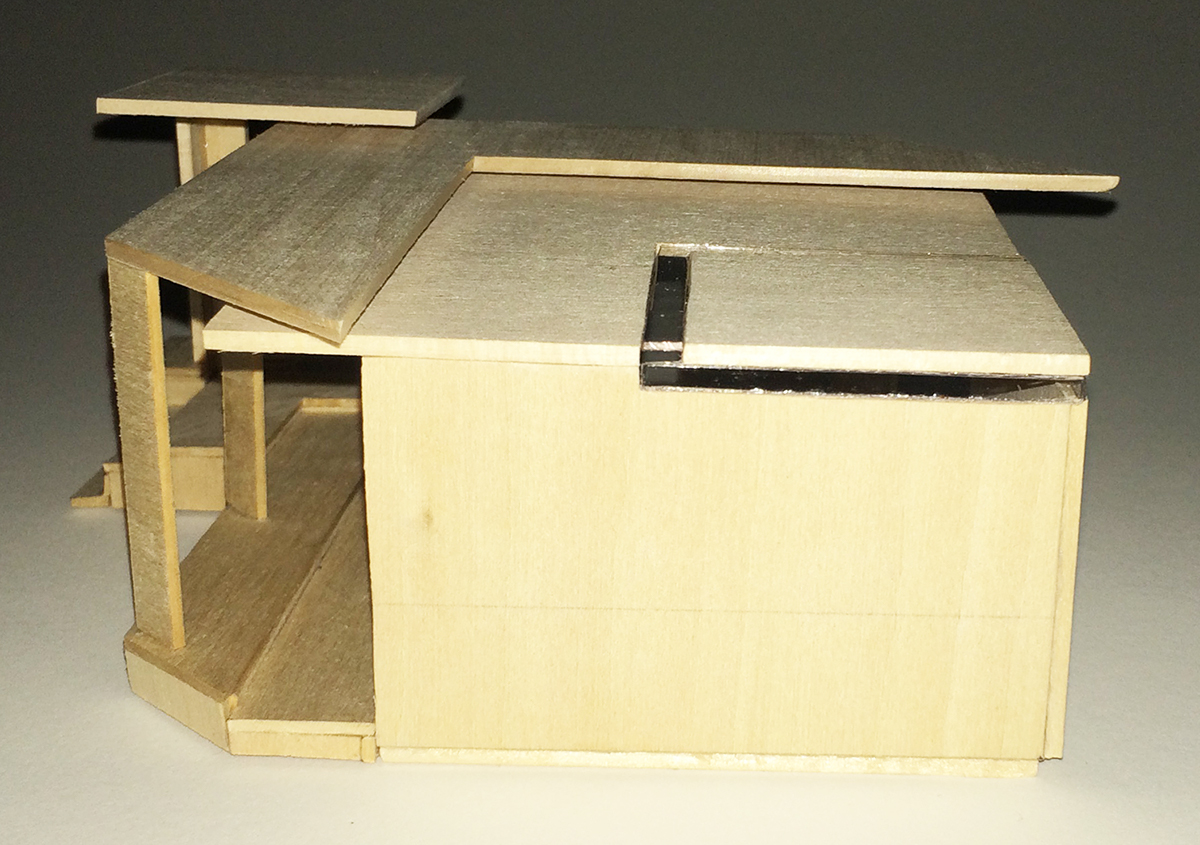
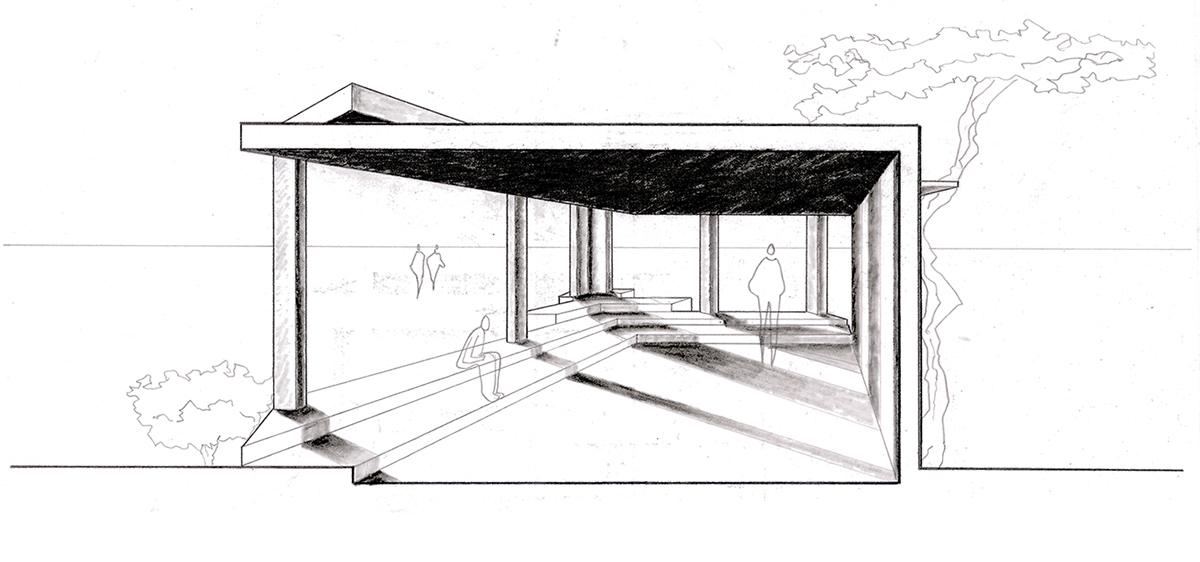
Tonal diagram,
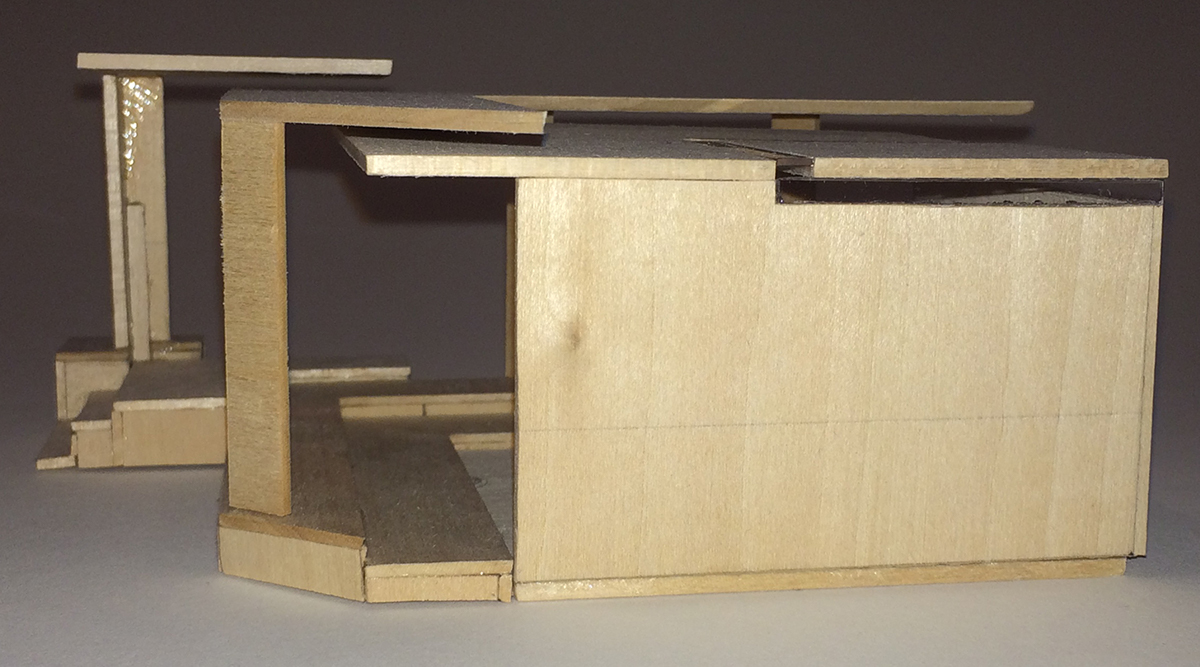
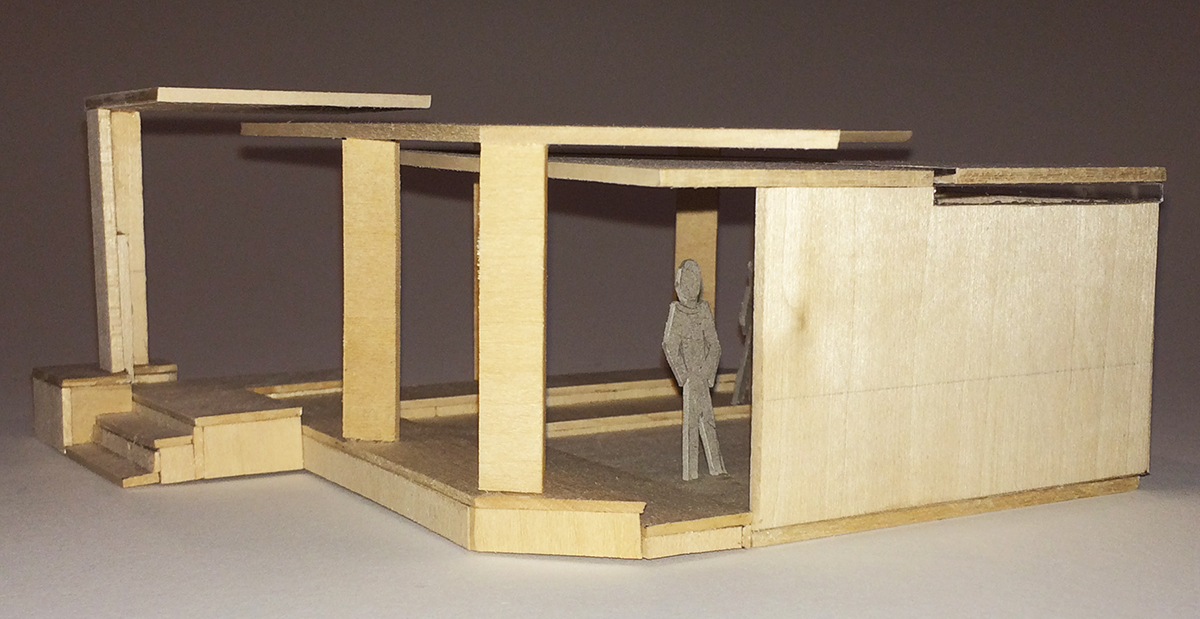


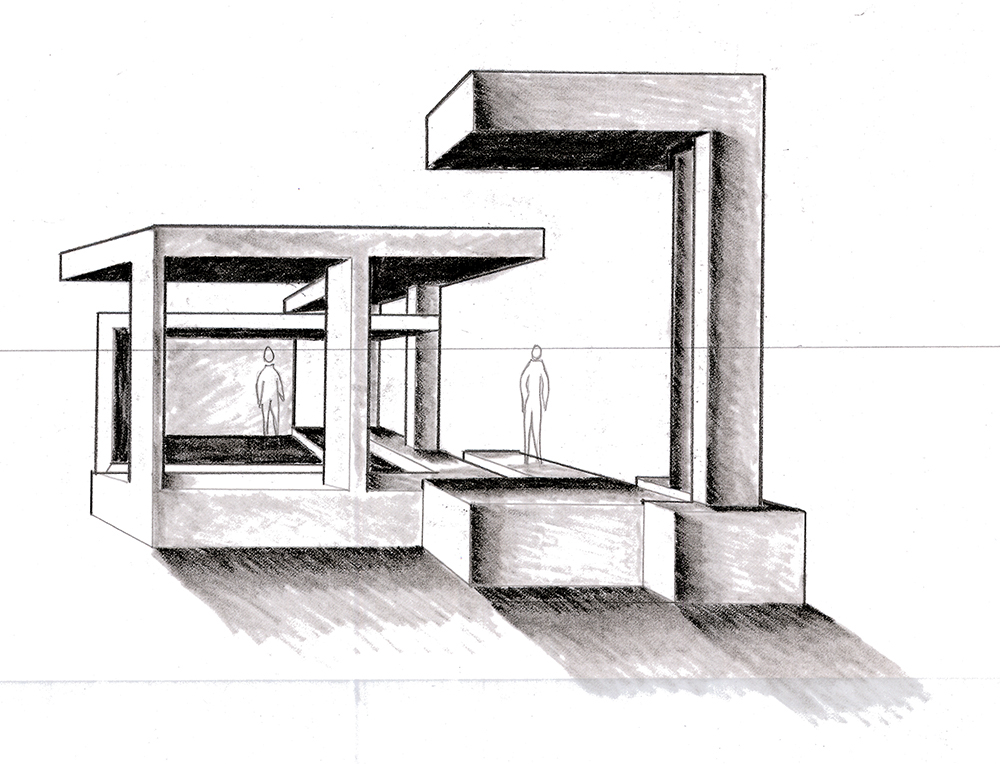
Tone Sketch, Elevation Perspective

